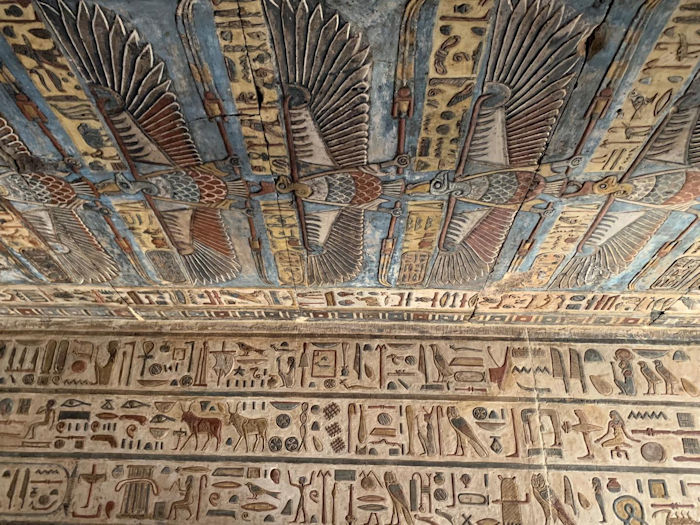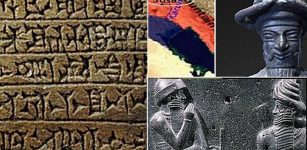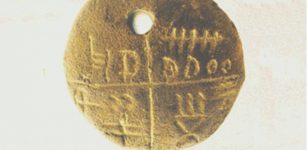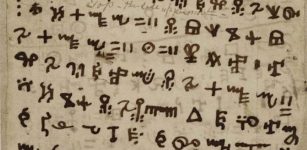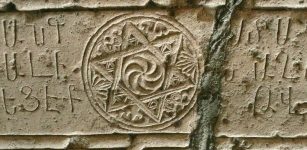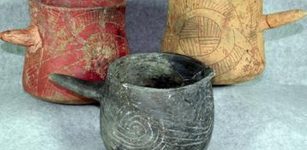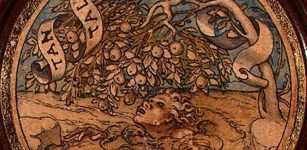Never-Before-Seen Colorful Inscriptions And Reliefs At The Esna Temple, Egypt Revealed After Restoration
Jan Bartek - AncientPages.com - For the first time in modern history, we are now able to see the colorfully detailed inscriptions on the ceilings and walls at the Esna Temple in Luxor, Egypt after a German-Egyptian archaeological mission finished its extensive restoration process.
Credit: Ministry of Tourism and Antiquities
Dedicated to God Khnum, his consorts Menhit and Nebtu, their son, Heka, and the goddess Neith the magnificent Esna temple was built in two stages. Pharaoh Tuthmosis III laid the foundations of the Temple in the 18th Dynasty, but Ptolemaic and Roman Emperors completed it between 40 to 250 A.D., and their names are recorded all over the temple walls.
The temple is in Esna, 60 kilometers south of Luxor in Egypt. Only the vestibule (called the pronaos) remains, but it is complete. At 37 meters long, 20 meters wide, and 15 meters high, the sandstone structure was placed in front of the actual temple building under the Roman Emperor Claudius (41-54 AD) and probably eclipsed it.
Scientists have been busy restoring the Esna Temple for some years now and more reliefs and inscriptions that are around 2,000 years old have been revealed to the public
Thick layers of soot and dirt have now been removed, and the reliefs and inscriptions can be admired again in bright colors.
Secretary General of the Supreme Council of Antiquities Mustafa Waziri explained that the restoration and cleaning process resulted in the appearance of original and bright inscriptions and colors under the middle ceiling above the entrance to the temple, which is located at a height of 14 meters.
According to Waziri, the relief depicts 46 eagles in two rows, 24 of them carry an eagle's head and represent Nekhbet, the goddess of Upper Egypt. The other 22 have a cobra head and represent Wadjet, the goddess of Lower Egypt.
During the cleaning of the western side of the temple, a Greek inscription drawn in red ink was discovered. According to Ahmed Imam, director of the restoration team the Greek inscription drawn in red ink that was completely covered under black soot.
Credit: Ministry of Tourism and Antiquities
The inscription dates back to the reign of Emperor Domitian (81-96 AD) and was written with a specific day and month (Epiphi 5). This date corresponds to the end of June and the beginning of July and marked the completion of the Temple’s original construction.
Credit: Ministry of Tourism and Antiquities
Waziris emphasized that none of the drawings or inscriptions of this ceiling appeared in the previous scientific publication of the French Egyptologist Serge Soniron, who recorded the inscriptions of the temple between 1963 and 1975.
Credit: Ministry of Tourism and Antiquities
Head of the Central Administration for the Registration of Egyptian Antiquities and head of the archaeological mission from the Egyptian side Hisham el-Leithi added that the temple's colorful inscriptions have suffered over the past centuries from the accumulation of thick layers of soot, dust, and dirt, in addition to the remains of birds, bats, spiders' nests, as well as salt calcifications left over from the factors of time nearly 2000 years ago.
See also: More Archaeology News
This necessitated the preparation of a restoration and development project for the temple to preserve it and its unique and distinct inscriptions, with funding from the American Research Center in Egypt.
Written by Jan Bartek - AncientPages.com Staff Writer


